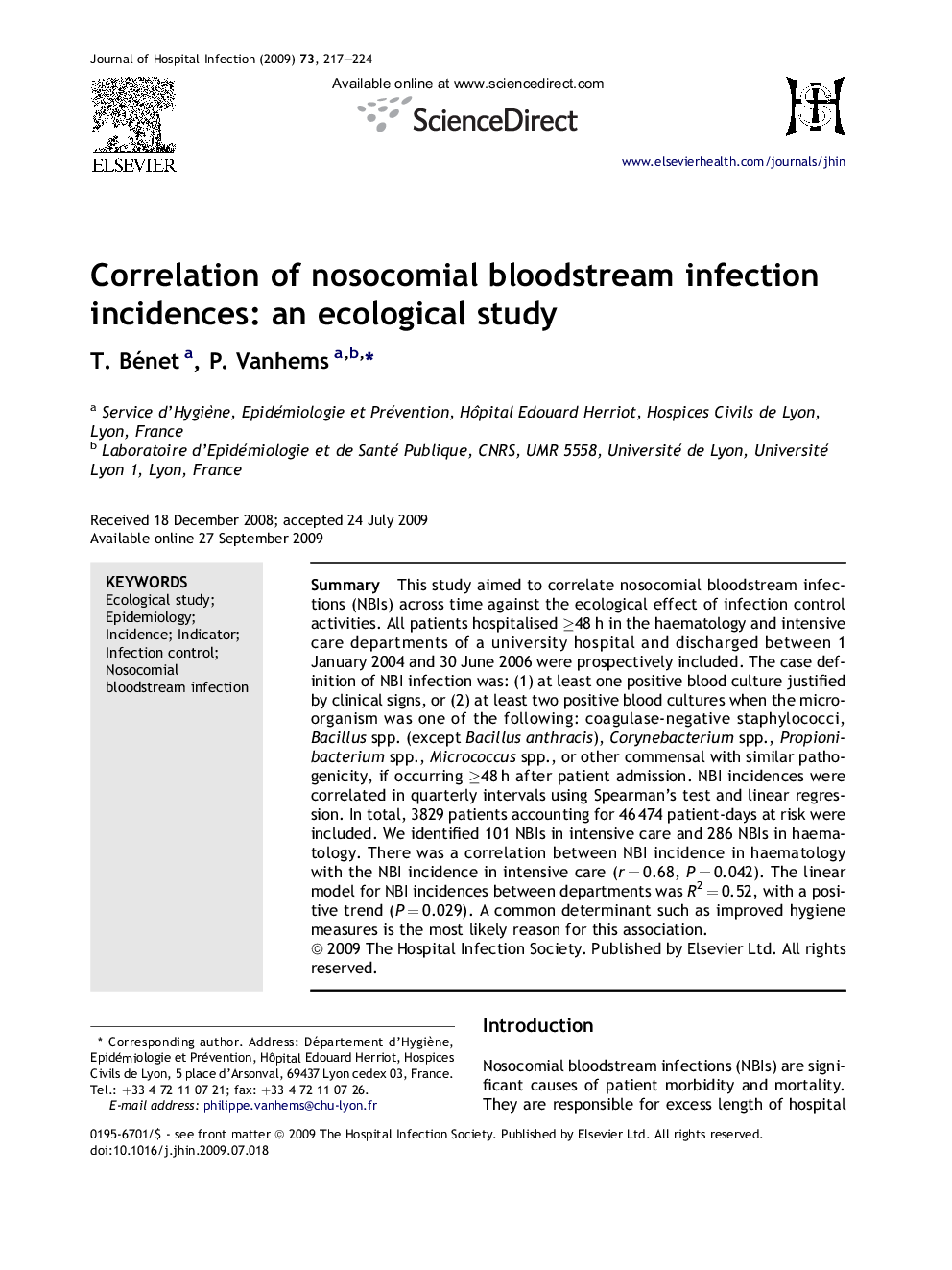| Article ID | Journal | Published Year | Pages | File Type |
|---|---|---|---|---|
| 3372987 | Journal of Hospital Infection | 2009 | 8 Pages |
SummaryThis study aimed to correlate nosocomial bloodstream infections (NBIs) across time against the ecological effect of infection control activities. All patients hospitalised ≥48 h in the haematology and intensive care departments of a university hospital and discharged between 1 January 2004 and 30 June 2006 were prospectively included. The case definition of NBI infection was: (1) at least one positive blood culture justified by clinical signs, or (2) at least two positive blood cultures when the micro-organism was one of the following: coagulase-negative staphylococci, Bacillus spp. (except Bacillus anthracis), Corynebacterium spp., Propionibacterium spp., Micrococcus spp., or other commensal with similar pathogenicity, if occurring ≥48 h after patient admission. NBI incidences were correlated in quarterly intervals using Spearman's test and linear regression. In total, 3829 patients accounting for 46 474 patient-days at risk were included. We identified 101 NBIs in intensive care and 286 NBIs in haematology. There was a correlation between NBI incidence in haematology with the NBI incidence in intensive care (r = 0.68, P = 0.042). The linear model for NBI incidences between departments was R2 = 0.52, with a positive trend (P = 0.029). A common determinant such as improved hygiene measures is the most likely reason for this association.
